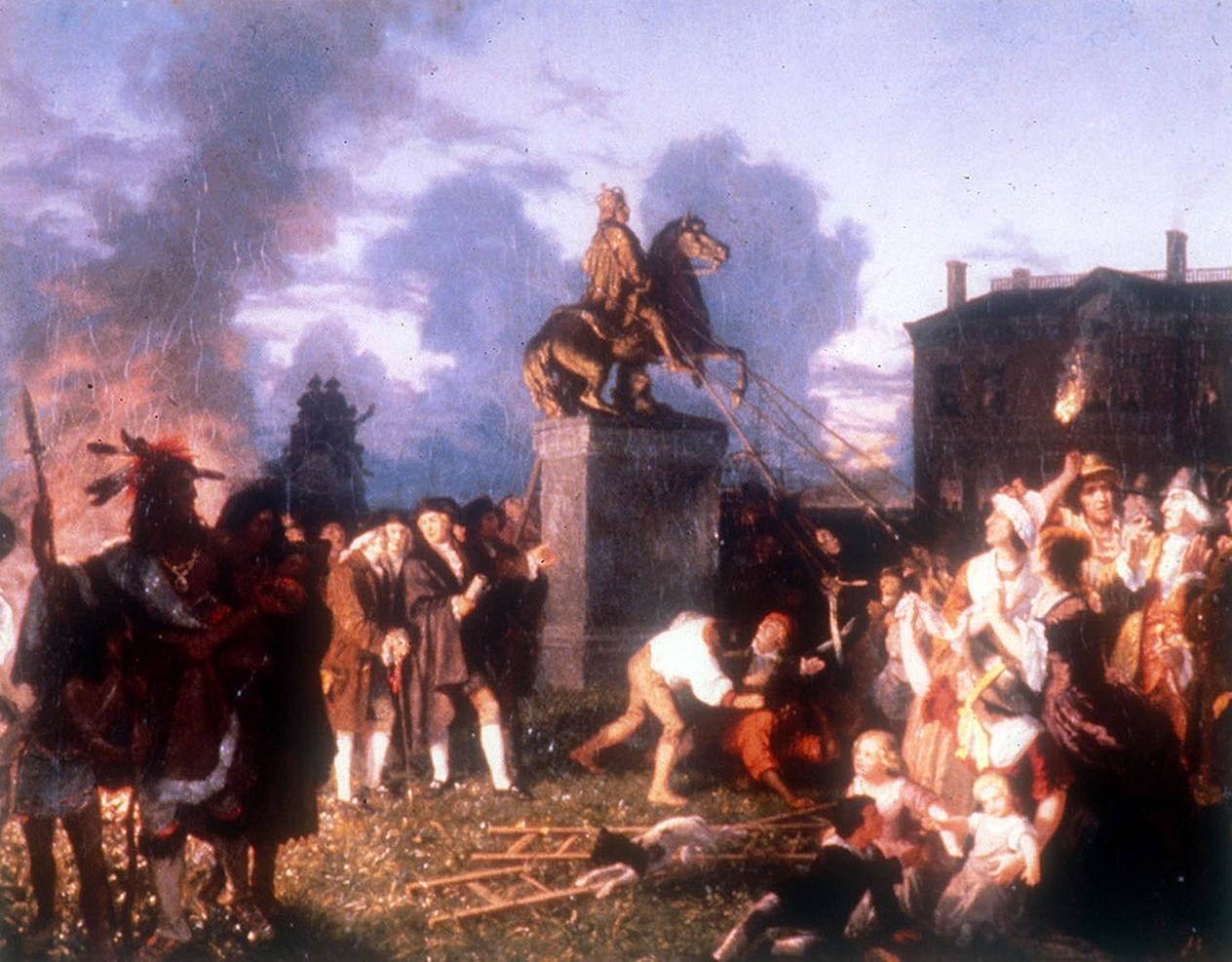
Fallen Idols: Twelve Statues That Made History By Alex von Tunzelmann
It is possibly because statues are supposed to be permanent fixtures that they are so susceptible to being rethought or regretted: they’re the municipal equivalent of tattoos. Fallen Idols is a response to 2020’s global iconoclastic mania. Of the dozen that Alex von Tunzelmann considers, including monuments to Lenin, Stalin, Rhodes and Robert E. Lee, two are among those pulled down amid last year’s Black Lives Matters protests – the statue of Edward Colston dumped into Bristol Harbour in June, and the statue of George Washington in Portland, tipped over later that month, on Juneteenth. Colston was a slave-trader, yet a prolific philanthropist and builder of schools, hospitals and almshouses. Washington was a slave-owner, yet a revolutionary liberator, and founder of a mighty democracy. When we look at statues, for all their monolithic presence, we still get to decide what we’re looking at.
This is why humankind has been pulling statues down (almost) as long as we have been putting them up. Von Tunzelmann’s introduction reminds that our totem-smashing instincts date back to at least ancient Egypt, where incoming pharaohs would demand the demolition of idols commemorating their predecessors. But she begins properly in New York in 1776, where Joseph Wilton’s statue of King George III was toppled – and beheaded – by an enraged rabble after just six years presiding over Bowling Green, in Lower Manhattan.
It was common in 2020 for anguished liberals to express discomfort with the anarchy of de-statueing, even as they agreed with the motives. This, von Tunzelmann explains, is not a new phenomenon either. One fretful observer who witnessed George III’s humiliation said that he “doubts not the persons who pulled down and mutilated the statue. . .were actuated by zeal in the public cause, yet it has so much the appearance of riot.” He carried on by advocating sternly that in future these things be left to proper authorities. His name was George Washington.
The difficulty will always be that no universally applicable ethical template can conclusively decide whether a given statue should stand or fall. That said, some of von Tunzelmann’s selections seem open-and-shut. Whatever one felt about the US-led invasion of Iraq in 2003, the glowering statue of tyrant Saddam Hussein in Baghdad assuredly had it coming. There seems no reason why the citizens of Kinshasa should want a statue of Belgian king Leopold II, who lorded over the horrors of the Congo Free State.
Even here, however, von Tunzelmann finds ambiguity and argument: Leopold’s statue was pulled down twice. The first time was in 1966, on the orders of loopy despot Mobutu Sese Soko, who may have believed that Kinshasa was only big enough for one rapacious maniac. After several decades mouldering “under a tree behind a shed, among other symbols of the colonial past”, Leopold was reinstalled in 2005 at the whim of Congolese culture minister Christophe Muzungu, taking to an extreme the notion, often floated in defence of controversial statues, that they are guarantors of our history, however murky it may be.
When it was made clear to Muzungu by an unimpressed crowd that if he didn’t take Leopold back down, then they would, it was re-removed. As has been the case in von Tunzelmann’s previous books, including terrific histories of the Suez Crisis and the Partition of India, her research is enlivened by a talent for unearthing and relating the droll factoid: “Muzungu claimed, not all that credibly, that it had only been put up as a trial, to test the stability of the plinth.”
Von Tunzelmann is surely correct when she argues that statuary is, in and of itself, a lousy way of commemorating or teaching history – it is often, in her words, “didactic, haughty, and uninvolving”. But as this gently inquisitive and often very funny book amply demonstrates, the disputes over a given statue can teach us a great deal – even if much of the culture war shrieking and quacking around statues, both for and against, does not usually indicate much willingness to learn.
This article is from the New Humanist autumn 2021 edition. Subscribe today.

